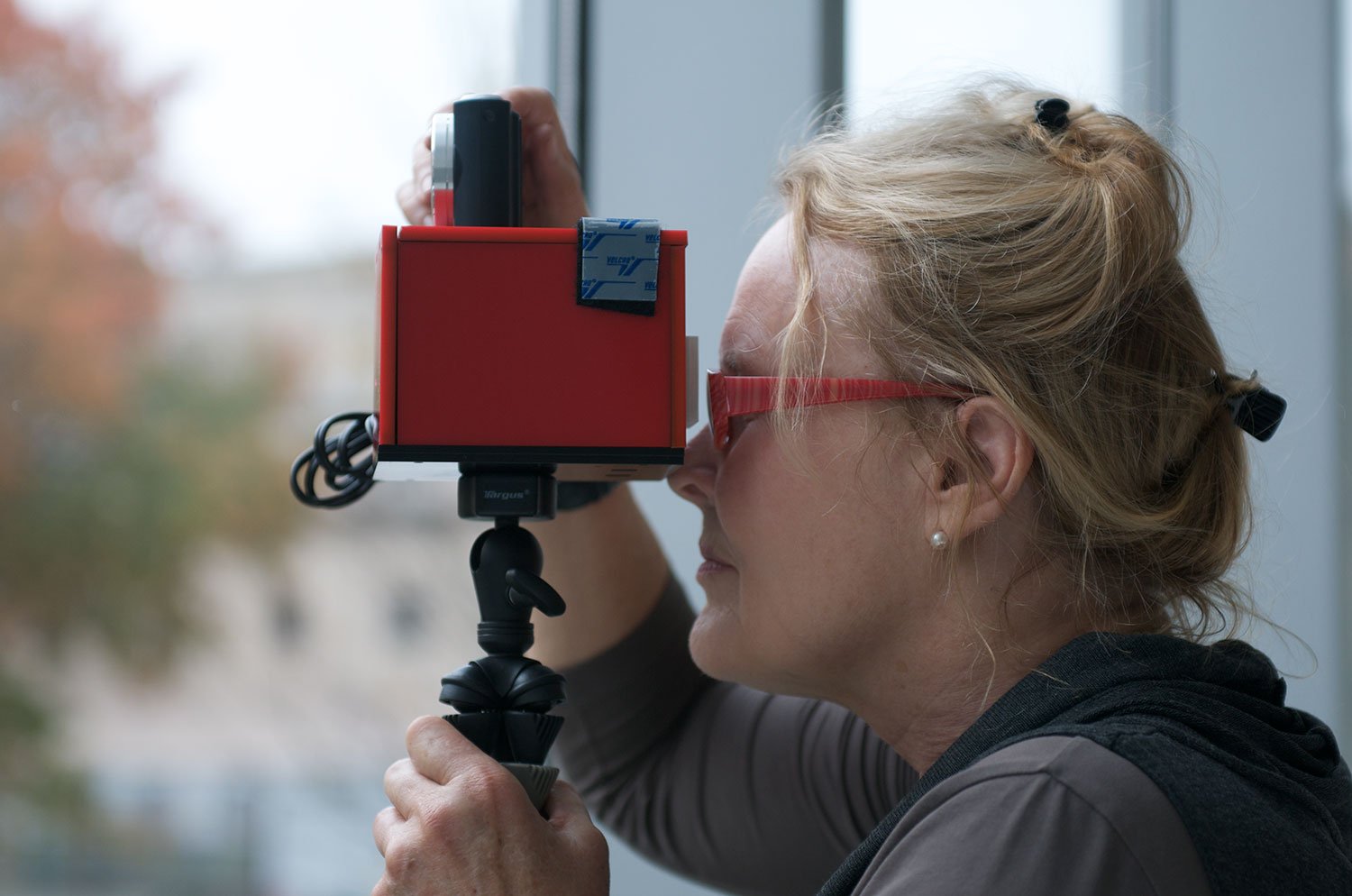
Seeing Machines
Elizabeth Goldring and the prototype Seeing Machine Camera, 2012. Photo: Stephanie Lin
As Senior Fellow at the Center for Advanced Visual Studies, MIT, Elizabeth Goldring collaborated with MIT and Harvard engineers, scientists, physicians, designers and students to create seeing tools and visual experiences for herself and others like her with severe vision loss due to macular degeneration or other diseases of the cornea, retina and lens. She worked with Scanning Laser Ophthalmoscope (SLO) inventor, Robert Webb, to turn the SLO into a “seeing machine” for her blind eye. Using the SLO concept, Goldring and her Vision Group at MIT developed an affordable, portable, easy-to-use “seeing machine camera” prototype which was tested at a low vision clinic in the Boston area. The prototype was made with the idea of making the “seeing machine camera” commercially available.
The Scanning Laser Ophthalmoscope (SLO)
“Eye Dance” documentary on Elizabeth Goldring’s work with the SLO, Ellen Sebring (producer), 2001. Note: audio starts 15 seconds into the excerpt.
The Seeing Machine Project
Elizabeth Goldring describes her work on Seeing Machines at MIT with the Vision Group at Art Culture and Technology (ACT), September 2010.
Click on image to read the article:
“The Seeing Machine Camera: An Artistic Tool for the Visually Challenged Conceived by a Visually Challenged Artist”
by Faye Wu, Chindhuri Selvadurai, Quinn Smithwick, James Cain, Jerry Cavallerano, Phil Silver and Elizabeth Goldring
Leonardo 45.2 (2012): 141–147. Web. 4 May 2012. © 2012 ISAST
A Visual Language for the Blind
The Visual Language for the Blind was developed in order to make basic English nouns and verbs easier to read for people with low vision or for people using Seeing Machine technology whose visual reasoning may not function well because of a prolonged visual impairment. In the word ‘door’ the ‘d’ and two ‘o’s cause interference which tends to make them indistinguishable from each other for people with low visual function. Thus, by replacing the double ‘o’ with an image that helps to convey the meaning of the word the new “word-image” becomes not only more legible but also more easily associated with its meaning. Goldring has drawn her inspiration for the word images from pictorial forms of writing including Chinese, Native American, Hobo, and Egyptian.
Above: samples of the Visual Language developed in the Vision Group that Goldring directed at MIT.












